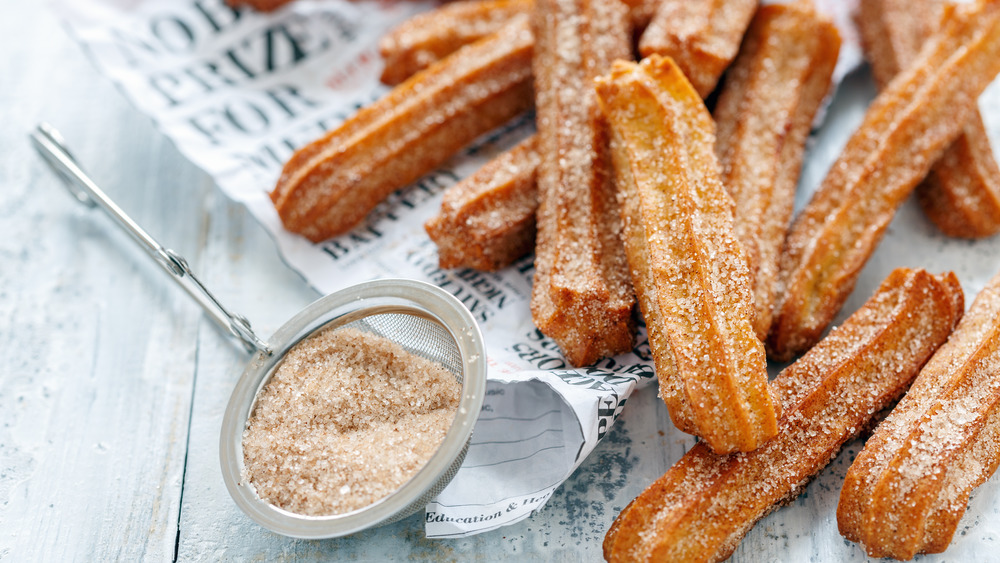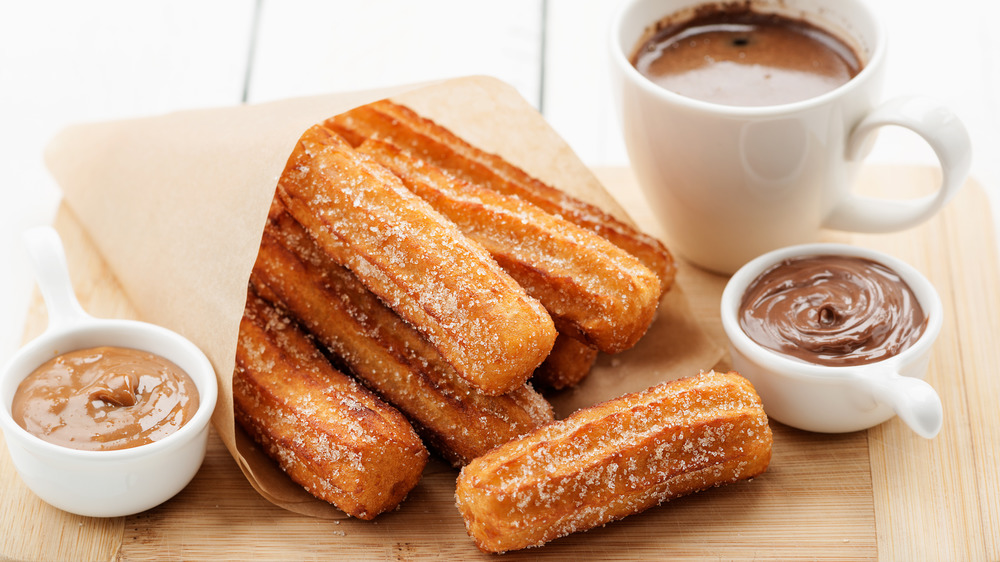The Biggest Mistake You're Making With Churros
Strips of tender pastry deep-fried until golden and then plunged in cinnamon and sugar, the ultimate churro is crisp and sugary on the outside, and delightfully donut-like on the inside. Incredibly hard to resist, churros can also be hard to master at home. That is, until now.
The true origin of the churro is unclear; some say Spanish shepherds invented the sheep-horn-shaped pastry because it was easy to pan-fry over a fire (via Coeur de Xocolat). Others assert that Portuguese sailors brought the concept home from China after enjoying "youtiao" (Chinese fried dough), and per HuffPost, neighboring Spain pressed the dough through a star-shaped tip and added sweetness, creating the signature churro we cherish today.
While the history of the churro is up for debate, one thing is not: The Spanish have been waking up to "churros con chocolate" — churros dunked in liquid chocolate — for hundreds of years (via Salt and Wind). If you'd like to rise and shine in similar fashion, simply dodge a few culinary mistakes and you can enjoy classic churros with ease.
No more deflating or exploding churros
First, let's discuss the batter. According to Carlsbad Cravings, authentic churros are made with a simple mixture of flour, water, and oil, and sometimes sugar and salt. There are no eggs, which means the batter cooks up crisp and light every time. Curious Cuisiniere agrees and adds that the stiff batter must be piped through a large star tip (1M). Najmas Kitchen explains that the tip creates ridges which promote even cooking in the oil; without the ridges, the outside cooks faster, creates a hard shell, and steam from the uncooked batter in the middle bursts out.
Once you've dodged exploding churros, it's time to avoid deflating ones. According to Saveur, the oil temperature for frying churros is 400 degrees, and to keep that temperature steady, don't crowd the pan by frying too many at once. To prevent collapsing churros, Kitchen Trial and Error states that the center of the churro must be fully cooked before removing it from the oil. Baking a Moment explains that if your churros have doughy, raw centers, they will collapse when cooling, so fry them longer (if the churros get too dark before the center is cooked, reduce the oil temperature).
Once the churros are cooked to perfection, Mexico in my Kitchen declares that a simple dusting of white sugar is the most traditional coating. That said, a hint of cinnamon and a side of melted chocolate is equally amazing.

